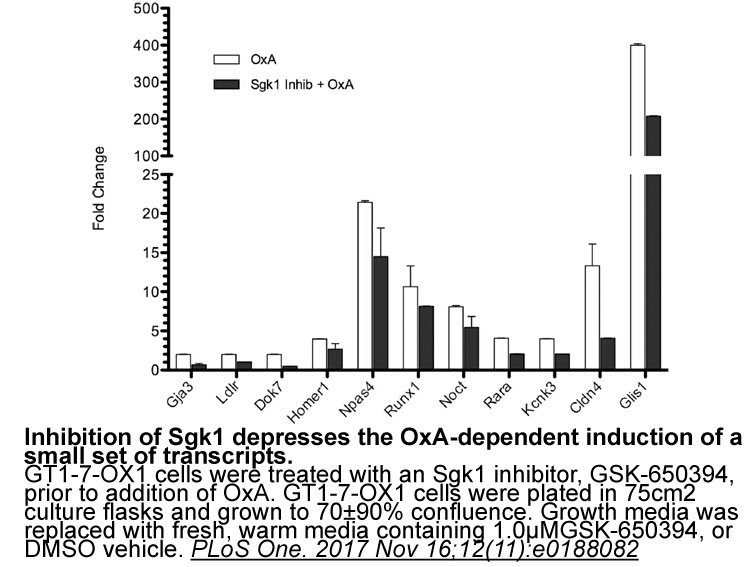Archives
br Results and discussion br Conclusions In
Results and discussion
Conclusions
In this report we present the synthesis, structure determination, and the in vitro and in vivo evaluation of a series of new quinone analogues aiming to find novel lead structures for the development of 5-LO inhibitors. Our findings support that also the hydroquinone scaffold can interact with high-affinity with 5-LO in a specific manner exhibiting high effectiveness in inflammatory models in vivo. We suggest that these compounds might represent privileged structures for the selective modulation of LT biosynthesis as well as for obtaining more potent and target-focused anti-inflammatory drugs.
Experimental section
Acknowledgements
This work was supported by the grant PON Nutrafast no. 01_01226 sponsored by the Ministero dell’Istruzione, dell’Università e della Ricerca and PON 03 PE_00069_03Sviluppo e sperimentazione di molecule ad azione nutraceutica e cosmeceutica.
Introduction
The catechol myxochelin A (1) is a widely distributed natural product in bacteria. Originally isolated from the culture broth of the myxobacterium Angiococcus disciformis, it Cy7 NHS ester (non-sulfonated) sale was later also described from phylogenetically unrelated microorganisms, namely the actinomycete Nonomuraea pusilla and the Chloroflexi bacterium Herpetosiphon aurantiacus. Myxochelin A is typically secreted in case of an iron deficiency in order to scavenge this important metal from the environment and deliver it to the cell. Aside from its role as a siderophore, 1 was also shown to be modestly active against Gram-positive bacteria. Quite recently, extended bioactivity testing unveiled its potent antitumor effects.3, 5 Myxochelin A suppresses tumor cell invasion at non-cytotoxic concentrations, which is possibly due to an interference with the proteolytic action of two matrix metalloproteinases, MMP-2 and MMP-9. The catalytic domain of MMPs is known to harbour a divalent zinc cation. Complexation of the latter by the catecholate units of 1 might thus be a possible explanation for the observed inhibitory effects.
The strong antileukemic effects of 1 were traced to an inhibition of human 5-lipoxygenase (5-LO).5, 8 This enzyme has a key role in the conversion of arachidonic acid to leukotrienes. The latter are i nvolved in inflammatory processes, and increasing evidence suggests that they also represent mediators of tumorgenesis.10, 11, 12 The active site of 5-LO features a catalytically important nonheme–iron atom, suggesting that the complexing properties of 1 might again contribute to its bioactivity. The catechol natural product 1 is hence a promising tool compound for the functional interrogation of MMPs and 5-LO. Up to now, only one route for the total synthesis of 1 has been described with an overall yield of 23.7%. Here, we describe a concise and more efficient strategy for the synthesis of this natural product with a total yield exceeding 70%.
nvolved in inflammatory processes, and increasing evidence suggests that they also represent mediators of tumorgenesis.10, 11, 12 The active site of 5-LO features a catalytically important nonheme–iron atom, suggesting that the complexing properties of 1 might again contribute to its bioactivity. The catechol natural product 1 is hence a promising tool compound for the functional interrogation of MMPs and 5-LO. Up to now, only one route for the total synthesis of 1 has been described with an overall yield of 23.7%. Here, we describe a concise and more efficient strategy for the synthesis of this natural product with a total yield exceeding 70%.
Results and discussion
The synthetic strategy involves the coupling of commercially available l-lysine ethyl ester with a protected 2,3-dihydroxybenzoic acid derivative, the subsequent reduction of ester 2 to alcohol 3 and finally the deprotection of the catechol moieties (Scheme 1). 2,3-Dimethoxybenzoic acid was chosen as the starting material for the coupling reaction, since it is commercially available and the dealkylation of methoxy groups employing boron tribromide is reliable. After evaluation of several coupling methods, among them N,N′-dicyclohexyl-carbodiimide and 1-hydroxybenzotriazole (HOBt), 3-(ethylimino-methyleneamino)-N,N-dimethylpropan-1-amine and HOBt, isobutyl chloroformate and N-methylmorpholine, benzotriazol-1-yl-oxy-tripyrrolidinophosphonium hexafluorophosphate (pyBOP) and N,N-diisopropylethylamine (DIPEA), the activation of the carboxylic acid as phosphonium salt with pyBOP proved to be the best method giving a yield of 85% of ethyl-N2,N6-bis(2,3-dimethoxybenzoyl)-l-lysinate (2). The subsequent reduction of the ethyl ester to form 3 was carried out with lithium borohydride. Finally, the deprotection of the catechol moieties with 12equiv of boron tribromide resulted in the formation of 1 in a total yield of 72.5% over three steps. The measured analytical data of the synthesized compound are fully consistent with literature values for 1.